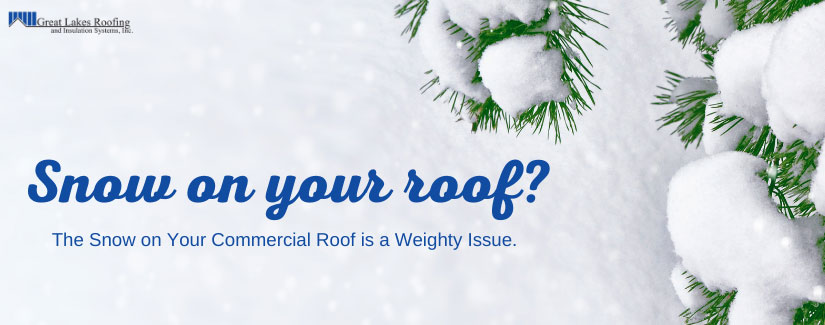If you own or manage a commercial property in the northern part of the US, you’re probably diligent about keeping it clear for customers and other building traffic. But the roof, being “out of sight, out of mind,” might get less of your attention. That can be a problem, as accumulated snow on the rooftop can create potentially hazardous issues if your building structure can’t handle the weight.
An easy winter with minimal snowfall may not matter too much. Six inches of dry light snow weighs about a pound and a half per square foot – probably ok. But if it’s wet, heavy snow, that same six inches can weigh ten pounds per square foot. In that case, a mere hundred square feet (10×10) will add 1000 pounds to your roof. That’s a much more serious proposition and if your building structure can’t handle the weight, you’re putting people and property at risk.
During a winter with substantial precipitation, you should include visits to your rooftop as part of your maintenance plan. Because there are likely to be freeze and thaw cycles when snow will melt, make sure that your drainage system is able to handle the flow of water. Backed up drains, gutters and downspouts can cause water to pond on your roof. And if that freezes into multiple layers of ice that grows to three inches thick, that 10×10 area will carry an additional weight of 1500 pounds.
So, it makes sense to clear accumulated snow and ice from your roof. When you do:
- Do it safely. Roofs can be unsafe when they’re clear and dry; when covered with snow, they are even more so. Crews should be especially cautious around the perimeter and near skylights, which may be hidden from view by snow.
- Know where the snow will go. When removing it, take care not to dump it onto walkways or near doorways. You should also avoid dropping onto sensitive plantings.
- Use the right tools. Don’t use metal shovels with sharp edges. These can damage single -ply roof membranes and then you’ll have bigger problems – especially in the spring when snow melts and water finds its way through those new holes. Also, if you’ve got ice to remove, use a product that’s compatible with your roof membrane. Check with the manufacturer on what would be appropriate.
If you have questions about wintertime roof care, please call the commercial roofing professionals at Great Lakes Roofing and Insulation 989-575-0190. We’re operating year-round to provide you with excellent service.

